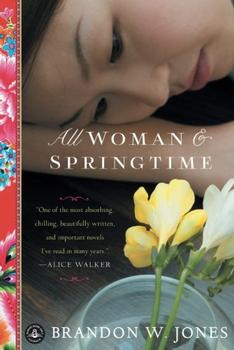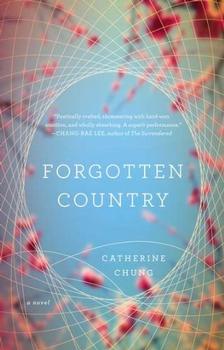Summary | Excerpt | Reviews | Beyond the book | Read-Alikes | Genres & Themes | Author Bio

A Novel
by Katherine GovierNovels set in foreign locales offer windows into other worlds; not the peek of a week-long vacation but something akin to a lived-in comfort. And setting a novel in Japan is, by nature, a world of contrast for western audiences.
Japan kept itself isolated from the western world until American gunboat diplomacy forced it open in the 1850s. It is in this time, before our "black ships" arrived and when Japan was struggling to maintain its cultural legacy, that Ei, the daughter of real-life master printmaker Hokusai and protagonist of Katherine Govier's The Printmaker's Daughter, is born.
Ei, or Oei as her father calls her, is raised in an era when "man is superior, woman inferior. That [is] doctrine." Her family is poor and lives in an impoverished area of Edo (modern Tokyo) where "townspeople [lead] an unmarked existence," and "[feed] on brown rice and whispers of love suicide." Within the Yoshiwara, or red light district, Hokusai - at once reviled by the government and revered by the people - produces erotica known as shunga to help pay the bills, even using his own daughters as models. Oei comes of age in this environment where "prostitutes and artists were the adults I knew," and she spends much of her time in the Yoshiwara - not as a courtesan, but as an observer, and ultimately as a reporter of Japanese life.
The Printmaker's Daughter is the story of Oei's life told from her perspective. Although she laments that "life, like art, is full of incident... But my life was not," her narrative is one of conflict, artistic dreams, censorship, obligation to family, and of defiance of societal prescriptions. Oei wants to be an artist, something forbidden by social mores, but she has talent enough and decides that "I would feed it, and then perhaps I could escape."
Freedom from censorship and social convention is unlikely, but she fights - within those constraints and in the shadow of her father - to gain a small amount of recognition for her art. (Incidentally, art historians today continue to debate her influence on the artistic world, some even ascribing her father's later work to her.) Though Oei's was a dreary existence, the quest for freedom - artistic or otherwise - is never dreary, and that is where Govier's tale distinguishes itself as a vibrant work of fiction.
Govier uses Oei's artistic perspective to construct a rich tapestry of life; the artist's eyes don't witness lightening simply flashing, but "roaming the sky, snarling, letting out its white, flickering tongue." The wind doesn't merely blow, but is a "melody from the samisen of a sad courtesan." Oei's art comes to life through her poetic descriptions, which aren't limited to her natural environment. Govier weaves the saga of Oei's life into Japanese customs - such as the parade of courtesans, or the shaved eyebrows that signify a married woman - in a fashion that develops an intimacy between the reader, Oei, and this complex culture. It's a potent combination that results in a mystically engaging story, and though Oei may not think her life is full of incident, her legacy certainly is.
Check out the accompanying website for The Ghost Brush (the name under which The Printmaker's Daughter was first published in Canada) where you can view images of artwork by both Katsushika Hokusai and Katsushika Oei. (Painting below by Katsushika Oei: Night Scene in the Yoshiwara; Museum of Fine Arts, Boston).

![]() This review
first ran in the January 12, 2012
issue of BookBrowse Recommends.
This review
first ran in the January 12, 2012
issue of BookBrowse Recommends.

If you liked The Printmaker's Daughter, try these:

by Brandon W. Jones
Published 2013
This spellbinding debut, reminiscent of Memoirs of a Geisha, depicts, with chilling accuracy, life behind North Korea's iron curtain.

by Catherine Chung
Published 2013
Weaving Korean folklore within a modern narrative of immigration and identity, Forgotten Country is a fierce exploration of the inevitability of loss, the conflict between obligation and freedom, and a family struggling to find its way out of silence and back to one another.
Your guide toexceptional books
BookBrowse seeks out and recommends the best in contemporary fiction and nonfiction—books that not only engage and entertain but also deepen our understanding of ourselves and the world around us.